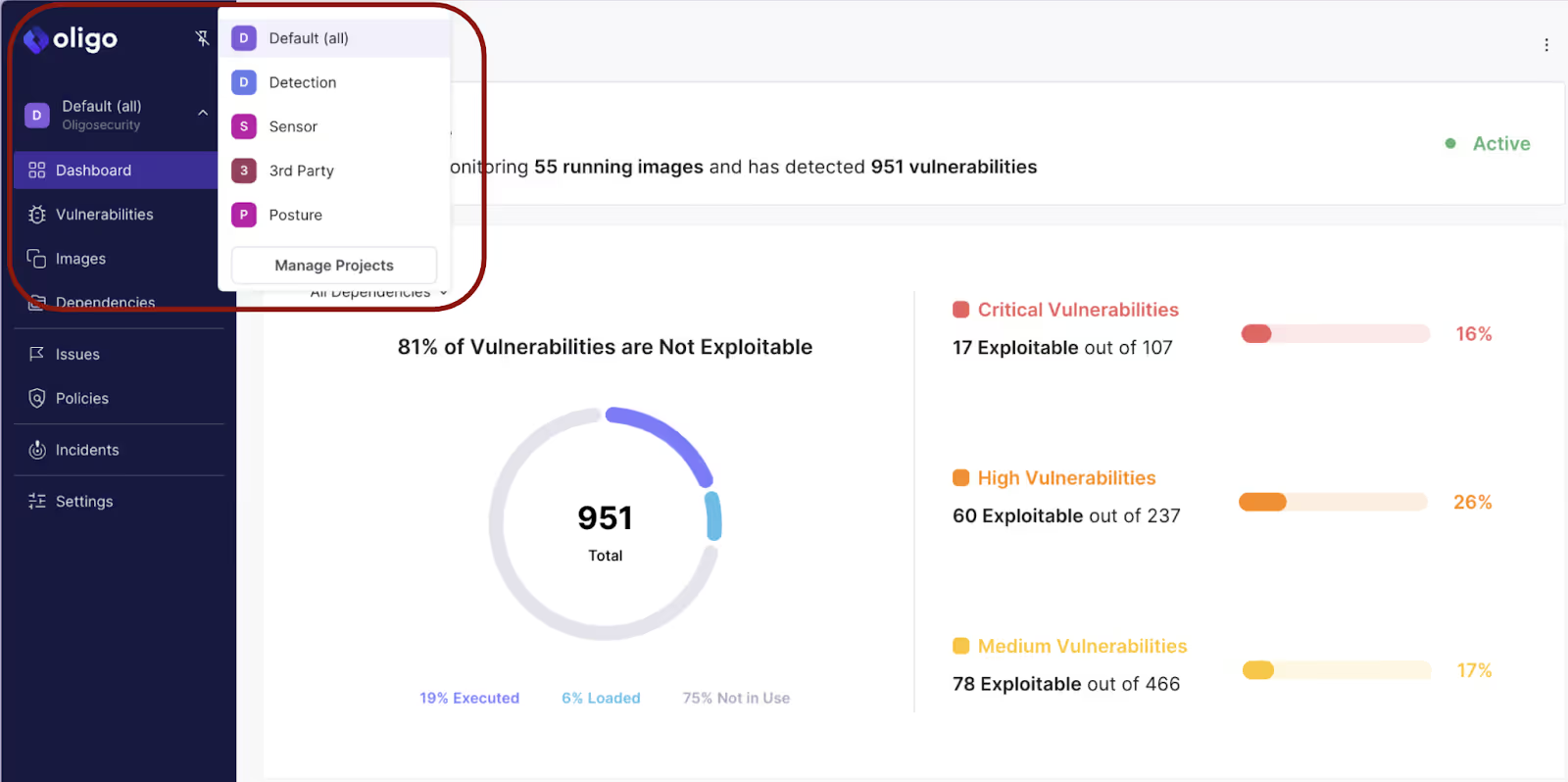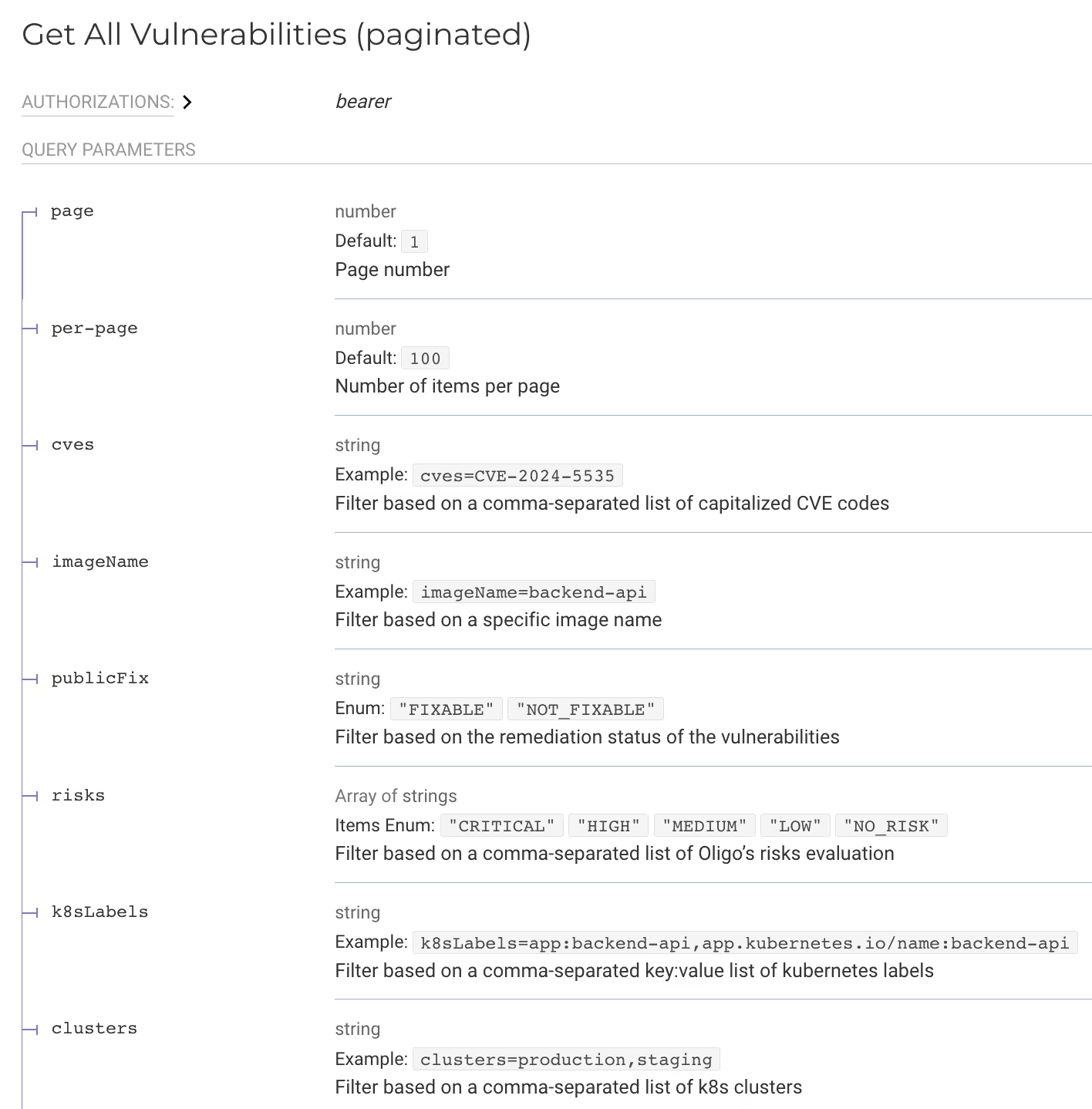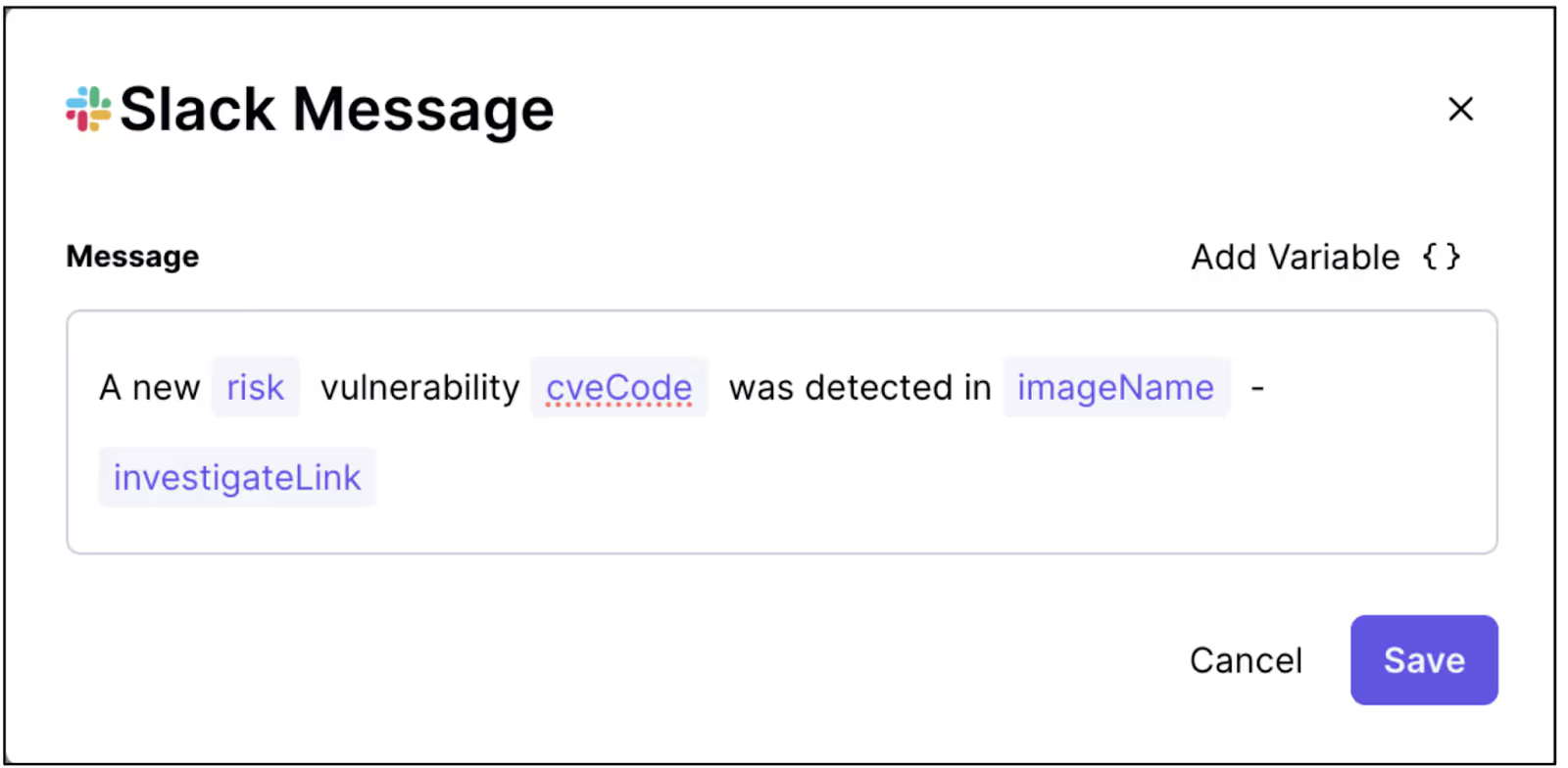As autumn begins, Oligo’s engineering teams have been releasing a range of features designed to make it easier for organizations to operationalize the Oligo Application Defense Platform and drive maximum value from their deployments.
With these new updates, Oligo strives to help every team see what they need in the Oligo platform, when they need it—especially by incorporating Oligo into the workflows that security and engineering teams already use.
Here are the top five recent product feature updates:
1. Projects: With our new “projects” view, users can assign data to different projects in order to segment it and optimize user experience. After assigning a specific cluster or namespace to a project, specific developers can be put in charge of the project—allowing them to see a security view that is limited to the data interesting to that development team, instead of seeing all results from all applications.

2. Kubernetes labels: Now, users can employ tagging in production to use in Oligo policies. For example: if you use an image’s owner as a pod label, you can see it in your Oligo Jira tickets, giving you information on exactly who is responsible for that image in order to remediate issues faster.

3. API Parameters: Previously, querying the Oligo API led to receiving all vulnerability results, without an easy way to limit which ones were received. Now, users can query the API using parameters, allowing them to—for example—see only the vulnerabilities attached to a specific CVE, or all the vulnerabilities present in a specific cluster.

4. Webook Actions: Customers increasingly want to use Oligo data to enrich findings and analysis from other tools. When there is no existing integration for a tool, our new webhook allows users to integrate with any service they want to enrich with Oligo results.

4. Editable Slack & Jira Notifications: Slack messages and Jira templates can now be edited using policy variables. These messages can now be tailored to your specific needs, including adding contextual information to your alerts to ensure that developers see the proof they need to prioritize fixes.

With these new features, it’s easier than ever to connect Oligo to existing workflows and tools. We’re also making sure that security and engineering teams see the data they need to appropriately contextualize vulnerabilities without getting overwhelmed by extraneous information.
Stay tuned—we’ve got more exciting product features coming in 2024 and beyond.

.png)



.png)